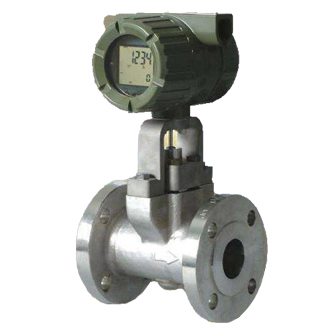Application Cautions for Differential Pressure Flowmeters
Because of the non-linear relationship between flow and differential pressure, the accuracy of flow measurement in the lower portion of the flow range can be degraded. Plugging of the impulse piping can be a concern for many services. For slurry service, purges should be used to keep the impulse piping from plugging.
For liquid service, impulse piping should be oriented and sloped so that it remains full of liquid and does not collect gas. For gas service, impulse piping should be oriented and sloped so that it remains full of gas and does not collect liquids. In vapor service, vapor may be allowed to condense in some of the impulse piping to form a liquid seal between the hot vapor and transmitter in order to protect the transmitter from heat.

Be careful because the calibration of the differential pressure transmitter can be affected by the accumulation of liquid or gas in the impulse tubing. In addition, the accuracy of the flow measurement system can be degraded when varying amounts of liquid can accumulate during operation.
Calibration issues can be important to the successful application of this technology. For example, differential pressure transmitter removal for calibration exposes the transmitter to multiple sources of potential problems that can affect the measurement, not the least of which is the extent to which the transmitter tubing is retightened after calibration. Calibration should generally be performed in-situ when possible and provisions to do so should be addressed during the design phase. For example, the differential pressure transmitter can be purchased with an integral valve manifold that allows easy calibration without disconnecting impulse tubing.
Gas applications should be designed carefully because changes in operating pressure and operating temperature can dramatically affect the flow measurement. In other words, the gas density can vary significantly during operation. As a result, the differential pressure produced by the flowmeter can also vary significantly during operation. Failure to compensate for these effects can cause flow measurement errors of 20 percent or more in many applications. In these applications, a flow computer can be used to calculate the corrected flow measurement using actual pressure, temperature and flow measurements.
- Pre:Differential Pressure Flow Transmitter 2015/12/28
- Next:India Exhibition-2013 2013/8/9
